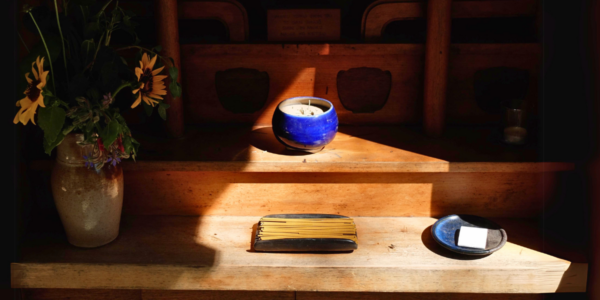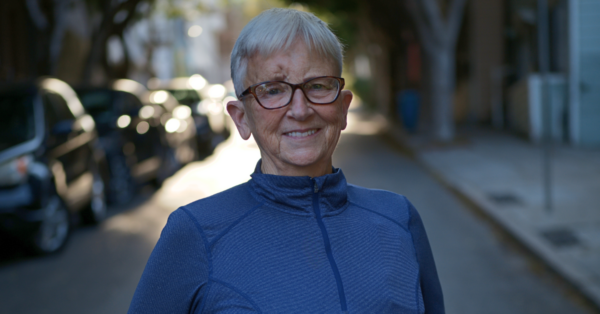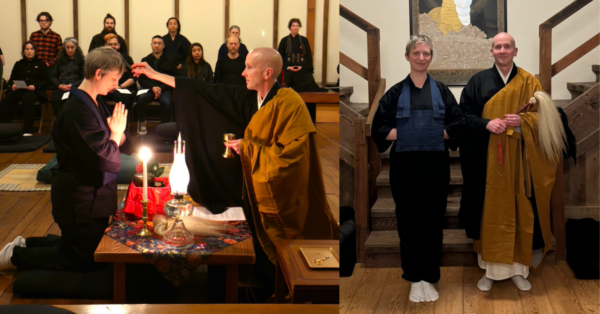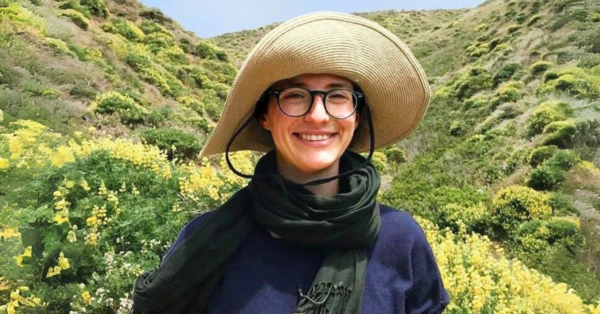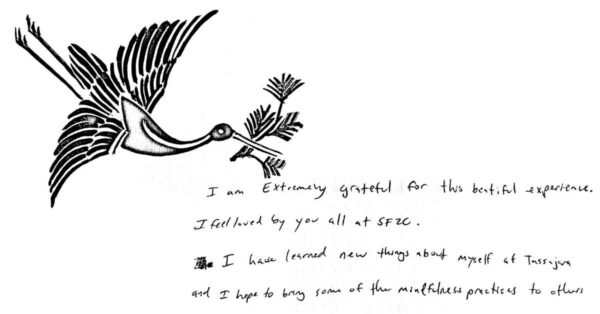Article by Sachico Ohanks, Communications Coordinator at SFZC
Photographs by Clare Hollander
Awareness of self is one of the core abilities that we develop, from which all other abilities draw support. And yet, as adults we often have little opportunity to explore this aspect of ourselves in a safe and supportive environment. In this interview, Keiryu Liên Shutt discusses the theme of “Me, Myself and I: To Have, To Hold, and Then To Let Go When Needed,” providing an opportunity to explore our sense of self.  How do we do this, you might ask? In this interview, Liên offers some insights into the process.
How do we do this, you might ask? In this interview, Liên offers some insights into the process.
Sachico: Your work today focuses on bringing awareness into everyday life, but you also have a monastic background with experience in Japan, Thailand and Viet Nam. Are there ways in which monastic practice influences your approach to today’s daily life?
Liên: If we view monastic practice as a container for practicing with our ability to be aware, then my time at Tassajara and overseas was the fullest container in which practice was fostered and supported. From having practiced in such containers, the two aspects which I think most influence me and my teachings these days are Zen as community practice and how forms and rituals really bring out our sense of self.
In life we do not act, make effort, or have experiences such as suffering in isolation, but as a result of causes and conditions. We really get to see how this teaching is true, especially so, in a monastic container because of the close-knit environment. We do everything together, over and over, day after day. At first, we see things from our own perspective, then we may learn to see someone else’s perspective, and eventually we get to understand a fuller perspective beyond duality (my experience and the experience of others) and how it is the result of many elements.
Soto Zen forms and rituals, especially when enacted in group settings, can be an opportunity to see and observe the arising of a self or a collected-self (group identity).
Sachico: On the theme of “Me, Myself and I: To Have, To Hold, and Then To Let Go When Needed,” you focus on exploration of our sense of self and how it plays out as we go about our ordinary lives. What is fundamental or key for you in your own sense of self?
Liên: A sense of self has validity. Asserting a sense of self can be useful; even necessary in certain contexts. A sense of self is not “bad” or “good”. A sense of self is relational. A sense of self is fluid.
Sachico: Many of us hold on to our sense of self out of an intention to create wholesome outcomes, such as to lead an authentic life or not be overly influenced by others or simply to not get hurt in situations where conditions are indifferent to us. How does the practice of letting go of self work in relation to intentions such as these?
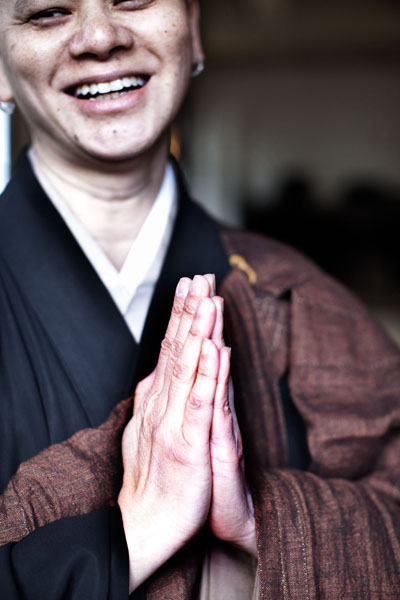 Liên: Having intentions is useful. It isn’t having an identity or a sense of self—“good or wholesome” or “bad or unwholesome”—which can bring suffering or dis-ease. It’s the clinging to an idea of a sense of self and the inability to let go, to shift when needed, in response to internal or external conditions, which is the cause of suffering or dis-ease. Therefore, the more we know when a sense of self tends to arise and solidify in each of us—in different contexts and conditions, as individuals and in relation to others—the more we’re able to identify, evaluate its usefulness or value in a given moment, and use the tools and ability to shift when change comes. Then, the possibility for ease is more accessible.
Liên: Having intentions is useful. It isn’t having an identity or a sense of self—“good or wholesome” or “bad or unwholesome”—which can bring suffering or dis-ease. It’s the clinging to an idea of a sense of self and the inability to let go, to shift when needed, in response to internal or external conditions, which is the cause of suffering or dis-ease. Therefore, the more we know when a sense of self tends to arise and solidify in each of us—in different contexts and conditions, as individuals and in relation to others—the more we’re able to identify, evaluate its usefulness or value in a given moment, and use the tools and ability to shift when change comes. Then, the possibility for ease is more accessible.
We look at three areas: Can we identify which sense of self is which in a given moment? Do we have the capacity to be with it fully in all its dimensions or nuances versus what we think it should be or what we want it to be? And then do we have the skill or ability to adjust when conditions call for flexibility? These three aspects correspond to the phrases in the title—to have, to hold, and to let go when needed.
__________



